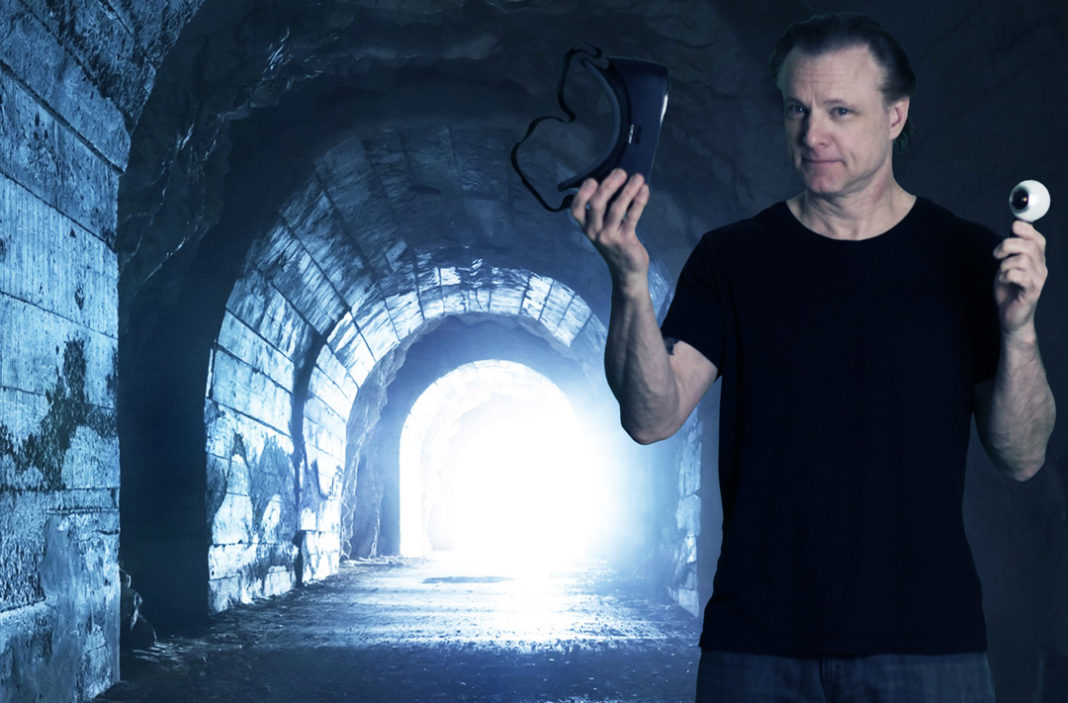Hollywood directors often rely on technical consultants to help make their cinematic experiences feel more realistic. From Spiderman: Homecoming to popular sci-fi films on the indie circuit, the “hard science” of technology and the artistry of filming have had an interesting relationship, to say the least. Directors–like most artists–learn their way through classic film techniques, angles, script writing and directing in school. Among the most famous film schools, some of the latest technology in augmented, virtual, and combined reality are just making their way into the classroom. Downstream of that, a handful of directors are taking the lead to implement elements of virtual reality into their contemporary work.
One of the directors I reached to examine the trajectory of AR/VR technology and film, Luke Sabis–the award-winning director behind Missing Child and Ghost Tenant, which premiered at the Short Film Corner at the Cannes Film Festival–explained that Hollywood loves new tech, but no one wants to be the first to go mainstream with it. One of its biggest problems, he explains, is dealing with the virtual reality platforms and headsets… the most interesting thing people are experiencing is the obstacle to adoption. “Not everyone wants a headset,” says Hollywood director, Luke Sabis. “You have to get it, adjust it, and get used to it. It’s that obstacle that some people don’t want to deal with.” Hollywood view? AR and VR are still early on the adoption curve.
We asked Sabis–a popular director on the indie circuit–to unpack his own experiences as a director in the AR/VR space. He acknowledges that the economics of augmented and virtual reality are what are driving initiatives in the space, including product placement. AR/VR will go the way of television, ultimately, with widespread adoption on these platforms.
THT: How are you using VR tech?
Sabis: I’m exploring the world of storytelling in 360 video. For the past year I’ve been experimenting with various ways of making a story interactive with an audience yet still maintain control of the narrative.
THT: For what purpose exactly?
Sabis: I want to see if there can be a segue from traditional filmmaking/storytelling to 360/VR video. The technology is in its infancy. VR and AR will affect all of our lives, most certainly in the education and medical fields, but also as consumers we’ll start to see the use of VR and AR in our daily lives like checking out a new neighborhood, or a new house or evaluating new products. Personally, I’m interested in using this technology in my artistic life, coming from a background in traditional filmmaking.
THT: How does it actually help you tell a story?
Sabis: Since the 1890s filmmaking has always been about shedding light on the truth of the human condition. It attempts to get a deeper understanding of what it means to be human. 360/VR can make an experience more vivid and real. The viewer can be placed in a scene and they can experience the action more intimately, hopefully getting to a deeper emotional truth of a story and human interactions.
THT: What are the specific tools that you use?
Sabis: I’ve experimented with the Samsung Gear 360 camera and I’ve viewed 360 experiences on the Samsung Gear VR. The Gear 360 camera is a nice way to capture 360 degree video, though the resolution is a little lacking compared to traditional film/video. The Gear 360, like most 360 cameras on the market, captures video in 4K. This sounds like high resolution but the 4K image is displayed in the 360 degree sphere giving a Field of View, (FOV) much lower than 4K. I’m experimenting using other cameras, like a Canon DSLR, or GoPro to shoot portions of a video and “stitch” it together in Adobe’s program After Effects. I’m also experimenting with creating virtual sets to be used in 360/VR experiences as well as in traditional film storytelling, Similar to what Robert Rodriguez did in Sin City.
THT: Where is the market?
Sabis: The main obstacle is getting more people on board with trying out a VR headset. Headsets like the Gear VR aren’t too expensive but they are a bit clunky and one does have to take a few moments to get acclimated with the technology to experience it. What would help is the same thing that helps mainstream feature film and TV, and that is “name” talent. If Tom Cruise was diving through the air in the next Mission: Impossible movie in 360 and/or VR, more people will check it out. At this point everybody out there, stars and audiences, are tentative about getting involved. Everybody’s still wondering if this stuff is for real!
THT: What’s the relationship between the director and the technology?
Sabis: I think it’s important for a director to become familiar with the various cameras and viewing devices out there for 360/VR, as well as knowing about the possibilities with post production programs like After Effects. It’s a new world. Nobody knows where it’s going, but by knowing what the tools are one can be daring in how we use this technology, next.
THT: Where do you see the best results, in experimenting with this tech?
Sabis: In terms of entertainment, certainly VR can be used effectively in the Gaming community. As far as traditional storytelling goes, the trick will be to learn how to make a VR experience interactive while maintaining some control of the narrative. Some say this can’t be done. I say, hmm… Give me some time.









